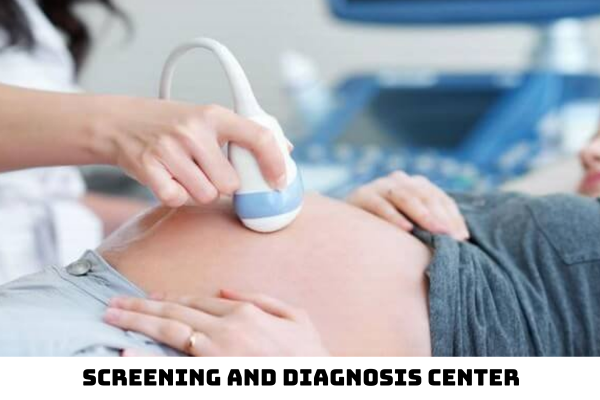Will the Central Highlands of Vietnam establish a regional prenatal and neonatal screening and diagnosis center?
Will the Central Highlands of Vietnam establish a regional prenatal and neonatal screening and diagnosis center?
On February 27, 2024, the Prime Minister of Vietnam issued Decision 201/QD-TTg 2024 approving the health facility network planning during the 2021-2030 period, with a vision to 2050 with the following contents:
Plan for the development of the health facility network
1. Allocation of health facility network by 2030
...
Population - reproductive health
- Develop in-depth technical services on assisted reproduction, screening, diagnosis, and early treatment of prenatal and neonatal diseases and disabilities in association with hospitals specializing in obstetrics/obstetrics - pediatrics and hospitals specializing in obstetrics/obstetrics - pediatrics.
- Develop 06 existing regional prenatal and neonatal screening and diagnosis centers in the Red River Delta, North Central and Central Coast, Southeast, and Mekong Delta regions; establish 02 regional prenatal and neonatal screening and diagnosis centers in the Northern Midlands and Mountainous, and Central Highlands regions.
- Develop in-depth technical services on health care for the elderly in association with geriatric hospitals and hospitals with geriatric specialties; establish geriatric hospitals in the Mekong Delta.
Thus, by 2030, the Central Highlands of Vietnam will establish 01 regional prenatal and neonatal screening and diagnosis center.

What are the objectives of the health facility network planning during the 2021-2030 period in Vietnam?
According to subsection 2 Section II of Decision 201/QD-TTg 2024, the objectives of the health facility network planning during the 2021-2030 period in Vietnam are specified as follows:
(1) General objectives:
- Formulate and develop a national health facility network in accordance with the requirements of protecting, caring for and improving people's health, towards the goal of equity, quality, efficiency, and international integration;
- Ensure the succession, feasibility and suitability to the country's socioeconomic development conditions in each period;
- Improve the quality of medical services at the level of advanced countries in the region and the world.
(2) Specific objectives and targets:
- Develop a national health facility network capable of providing quality medical services to meet people's healthcare needs;
Ensure that each region has a general hospital that performs regional functions; develop specialized centers in general hospitals; upgrade several provincial specialty hospitals capable of providing intensive technical services to meet the health care needs of people in the region;
Develop several high-tech, modern specialized hospitals on par with advanced countries in the region and internationally.
Consolidate and develop the out-of-hospital emergency system;
Develop high-tech-intensive and intensive private hospitals that provide high-quality, technically advanced services, some of which are at the international level;
- Establish central centers for disease control and regional centers for disease control, upgrade provincial centers for disease control to ensure sufficient capacity for forecasting, surveillance and early detection, timely and effective control of epidemics and control risk factors affecting public health;
Establish level 4 biosafety laboratory for central centers for disease control and level 3 biosafety laboratories for regional centers for disease control.
- Upgrade the national institute in the field of testing, inspection and verification of drugs, vaccines, bio-products, and medical devices to international standards;
Develop regional testing centers meeting national standards; develop national medical devices testing and calibration centers and medical laboratory quality control centers to meet the demand for testing, inspection and standardization of drugs, cosmetics, food and medical devices of provinces and cities in the region;
Develop research centers and centralized production areas on pharmaceuticals, vaccines, bio-products, and high-tech medical devices in order to enhance domestic production capacity and increase export value; establish a national research unit on technology transfer on vaccines.
- Improve the professional capacity of medical, forensic áxamination, and forensic psychiatric assessment facilities to meet assessment requirements.
- Develop the network of health facilities providing reproductive medical services; meet long-term care needs for the elderly.
- Strive to reach 33 hospital beds per 10,000 people by 2025, 15 doctors per 10,000 people, 3.4 pharmacists per 10,000 people and 25 nurses per 10,000 people;
By 2030, reach 35 hospital beds per 10,000 people, 19 doctors per 10,000 people, 4.0 pharmacists per 10,000 people, 33 nurses per 10,000 people, the proportion of private hospital beds will reach 15% of the total number of hospital beds.
What are the purposes of prenatal and neonatal screening and diagnosis in Vietnam?
According to Article 1 of the Professional and Technical Guidance on Prenatal and Neonatal Screening, Diagnosis and Treatment issued together with Decision 1807/QD-BYT 2020, the purposes of prenatal and neonatal screening and diagnosis in Vietnam are specified as follows:
- Detect, intervene and early treat diseases, disabilities, metabolic and genetic disorders during the fetal and neonatal periods;
- Help children born develop normally or avoid severe physical and intellectual consequences, minimize the number of disabled and intellectually disabled people in the community, and contribute to improving the population quality.
Thư Viện Pháp Luật